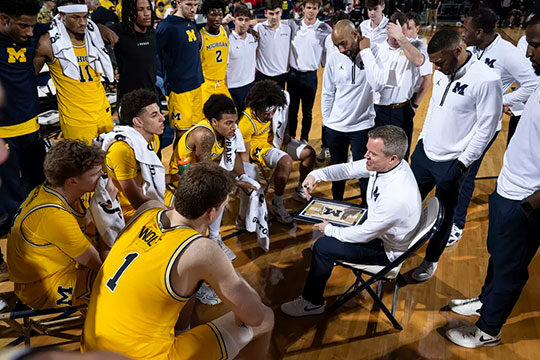How Michigan planted its flag on Greenland — or tried to

When U-M researcher William Herbert Hobbs traveled to Greenland in the 1920s, he set off on a spree with a map and a pencil, planting Michigan-connected names on practically any feature of the landscape that caught his eye.
-
U-M performances celebrate a century of dancing at U-M
Since the first “aesthetic dance” class, taught in 1909, the university has been a locus of dance instruction and a venue for visiting artists from Jose Limon to Martha Graham.
-
The great raid
One night during the Great Depression, police stormed U-M’s fraternities.
-
A life on the edge
Journalist and U-M alumnus Frank Viviano has covered war and conflict around the world. Now living at a slower pace in Italy, his combination of experience and distance give him a uniquely informed perspective on world events—and how to live during these times of crisis.
-
Spring afternoon on the Diag
Sunshine, lush grass and trees in bloom. On a warm May afternoon, when the semester’s done, there’s no place finer.
-
U-M students chasing tornadoes
Six U-M students are part of a group of almost 100 scientists in 40 vehicles who are traversing tornado alley this summer in the largest joint effort ever to study twisters and supercell thunderstorms.
Columns
-
President's Message
Navigating proposed policy changes
U-M leadership is working with university peers to craft a sector-wide strategy to engage constructively with the federal government. -
Editor's Blog
Finders, keepers
Keep your eyes peeled, people. The universe delivers wisdom in the most random 'found' objects. -
Climate Blue
Landscape management versus climate change: A false choice
Now is the time to develop approaches to building that respect the landscape and the changing climate that shapes it. -
Health Yourself
Do you have a rare disease?
After discovering that one of his friends is allergic to water, Victor Katch takes a deep dive into rare diseases.
Listen & Subscribe
-

MGo Blue podcasts
Explore the Michigan Athletics series "In the Trenches," "On the Block," and "Conqu'ring Heroes." -

Michigan Ross Podcasts
Check out the series "Business and Society," "Business Beyond Usual," "Working for the Weekend," and "Down to Business." -

Michigan Medicine Podcasts
Hear audio series, news, and stories about the future of health care.
A march toward madness — the NCAA kind
The Dusty May era of the University of Michigan men’s basketball team opened the regular season with a victory at home on Nov. 4, defeating Cleveland State 101-53. It was a great beginning to what is shaping up to be a thrilling season. Enjoy these highlights so far — and let’s forget that loss to MSU for a moment — as the team forges a hopeful path toward the annual March Madness tournament. (Captions were sourced from mgoblue.com.)
















